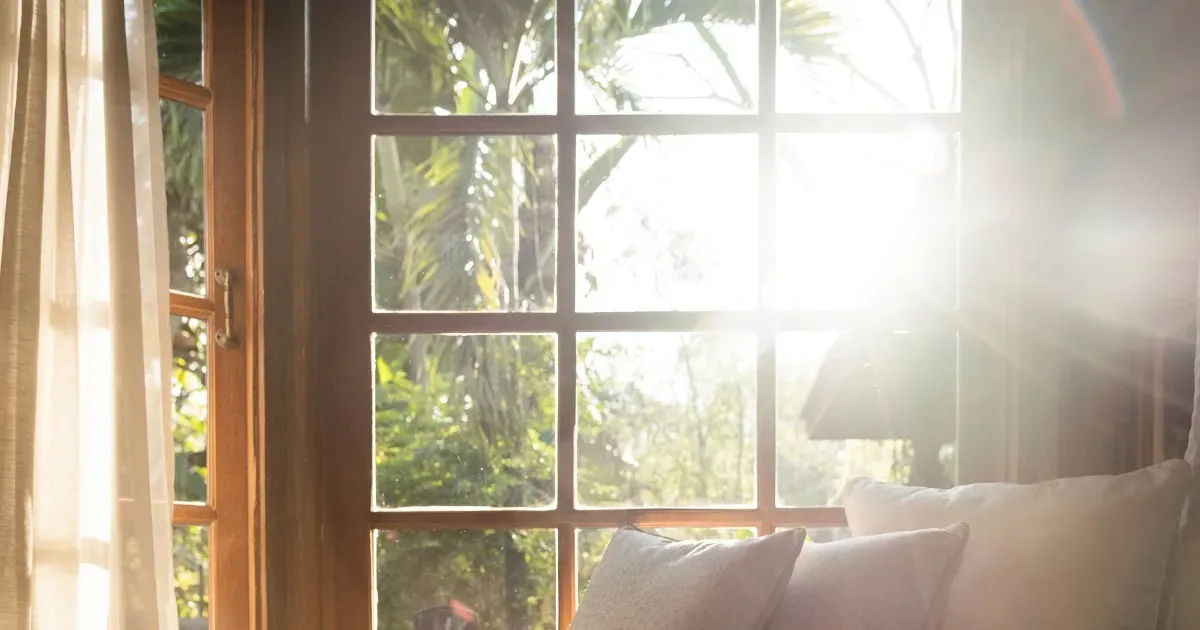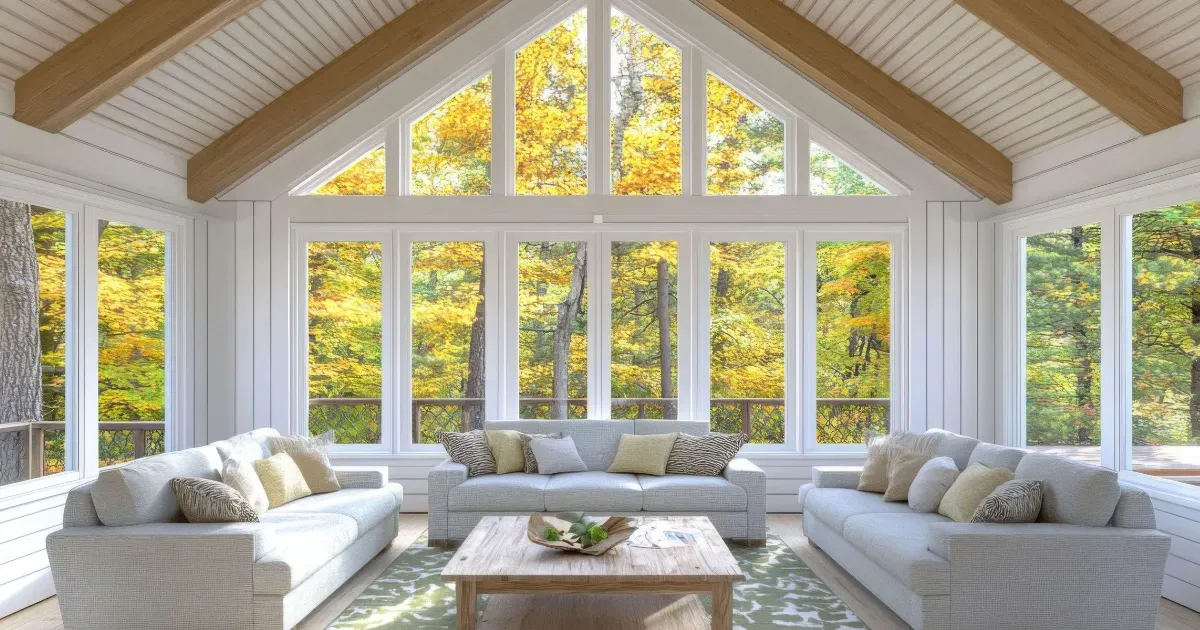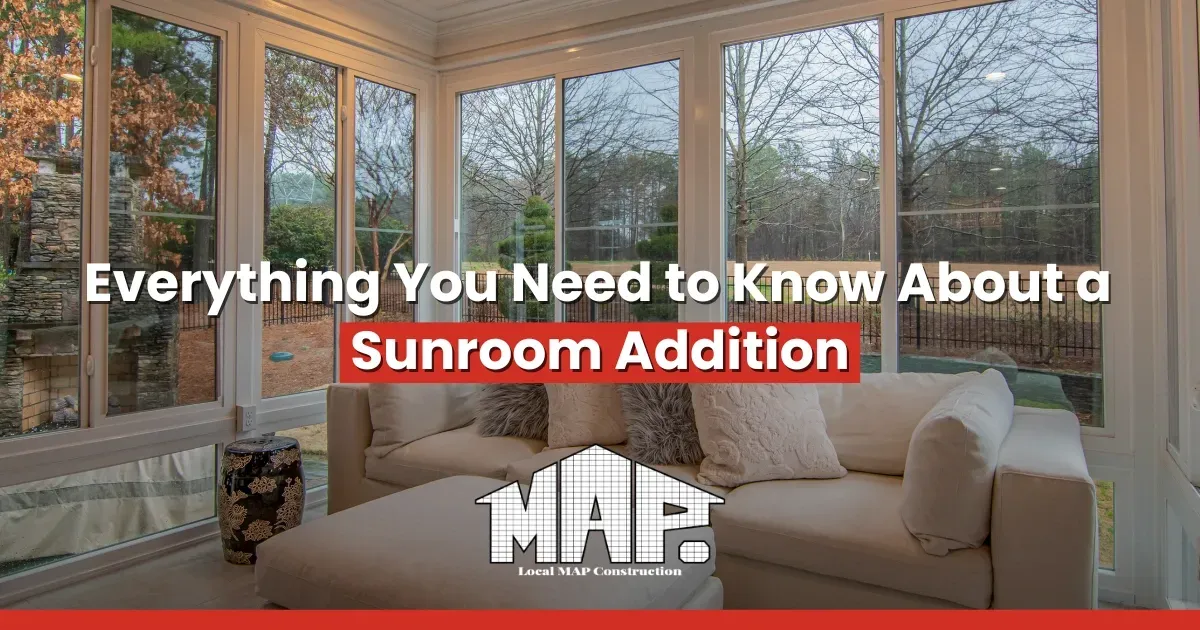Everything You Need to Know About a Sunroom Addition
Thinking about a sunroom addition can feel like opening the door to more sunshine in your life. It’s a space that blends indoor comfort with the beauty of the outdoors. The right plan makes it more than just extra square footage. It becomes a spot filled with natural light, cozy mornings, and relaxing evenings. This guide walks you through every step so you can plan a home addition that boosts comfort and improves resale value at the same time.
What Is a Sunroom Addition?
A sunroom addition is a type of room addition designed to bring the outdoors in while keeping you protected from the weather. It often features glass walls, a glass ceiling, or casement windows that flood the space with sunlight. Unlike basic patio enclosures, sunrooms can range from simple screen rooms to fully climate-controlled indoor spaces. They are used for lounging, dining, or even as hobby areas. With design flexibility, they fit many home styles, adding beauty and function.
What Types of Sunroom Additions Can You Build?

Choosing the right style is necessary, since each design offers different levels of comfort, energy efficiency, and cost. From breezy seasonal rooms to fully insulated spaces, your options provide plenty of design flexibility. Read to know the most common types you can consider.
Three-Season Sunroom
A three-season sunroom is built for spring, summer, and fall use. It’s not typically insulated, but it delivers plenty of natural light and outdoor views. Many homeowners choose three-season rooms for reading spaces or casual dining areas. If you live in a mild climate, this option offers a low-cost path to a relaxing retreat.
Four-Season Sunroom
A four-season sunroom allows all seasons thanks to insulated glass walls, thermal breaks, and high thermal performance. It can handle heating and cooling systems, keeping it comfortable even during extreme weather. This design adds maximum resale value since it functions like a regular living space. Think of it as an extra living room where the outdoors is always in view.
Studio Sunroom
A studio sunroom has a simple roofline that works with most home designs. It pairs well with vinyl floor, ceramic tile, or even a concrete floor, depending on your style. Its clean lines and energy-efficient glass keep costs lower while still delivering an airy space. If you’re after a budget-friendly option, this could be your match.
Gable Sunroom
A gable sunroom features a pitched roof, adding height and visual drama. The sloped roof panels make it feel spacious and invite more solar heat gain and natural light. With custom design touches like knee walls and electrical system integration, it feels like a full home addition. This design often pairs beautifully with classic or traditional sunrooms for homeowners who love timeless looks.
What Design Features Can You Include in a Sunroom?

Design details make the difference between a basic room and a dream retreat. Choosing the right features not only improves comfort but also boosts energy efficiency and long-term resale value. Below are a few of the top options homeowners love.
Glass Walls
Glass walls maximize sunlight and provide uninterrupted views of your yard. With energy-efficient glass, they help balance solar heat gain while maintaining thermal performance. They make even compact spaces feel bigger and brighter. Adding sliding or folding panels can create even more design flexibility.
Roof Panels
Your choice of roof panels impacts comfort and energy efficiency. Solid insulated options control temperature, while transparent ones increase brightness and natural light. Some homeowners even mix styles for the right balance. Combined with thermal breaks, they also help reduce seasonal energy loss.
Casement Windows
Casement windows are practical for airflow and easy cleaning. They allow you to control ventilation while enjoying fresh breezes. High-quality windows also improve thermal performance, reducing strain on your heating and cooling systems. Their clean style blends well with both modern and traditional sunrooms.
Vinyl Floor
A vinyl floor is durable, moisture-resistant, and stylish. It’s easier to maintain compared to ceramic tile or Dutch carpet, making it great for high-traffic sunroom additions. Many homeowners pair it with radiant heating and cooling systems for comfort year-round. It also adds to the overall resale value of the space.
What Permits or Requirements Should You Know?

Adding a sunroom often requires building permits since it changes your home’s structure. Codes may cover electrical system updates, insulation, and local project management rules. You’ll also need to confirm zoning requirements and property lines before starting construction. Some towns may require inspections for thermal performance or energy efficiency standards. Checking with sunroom contractors upfront prevents costly delays.
How Do You Choose the Right Contractor for a Sunroom Addition?
Look for sunroom contractors with proven experience in room additions. They should guide you from initial design through permits, construction, and local project management. Ask about materials like sunroom kits, energy-efficient glass, and custom design options. Reliable contractors explain how they handle heating and cooling, electrical systems, and screen rooms vs. full builds. The right team balances style, budget, and long-term value.
Frequently Asked Questions
Is a sunroom different from a patio enclosure?
Yes. A sunroom addition is more advanced than a patio enclosure. It uses insulated glass walls and can include heating and cooling for true indoor comfort. A patio enclosure is simpler, usually without full insulation.
How long does a sunroom take to build?
Construction time really comes down to the design. Sunroom kits can be finished in just a few weeks, while custom builds with concrete floors and electrical systems often take a few months. Don’t forget about permit approval either, since that part can sometimes stretch the timeline.
Can a sunroom be climate-controlled?
Yes. A four-season sunroom integrates heating and cooling systems. With the right insulation and thermal breaks, it feels like any other room in your house.
Does a sunroom require HVAC integration?
Not always. Some three-season rooms or Arizona rooms rely on fans or portable units. For a climate-controlled indoor space, HVAC or ductless systems add comfort and value.
What is the expected lifespan of a sunroom?
With quality materials, a coastal sunroom or Hampton room can last decades. Proper upgrade of roof panels, casement windows, and flooring, like vinyl floor or ceramic tile, extends life. Professional installation also supports long-term durability.
Wrapping
Adding a sunroom addition is one of the smartest home additions you can make. It opens your home to natural light while giving you an inviting retreat. With the right initial design, materials, and contractor, you’ll enjoy lasting comfort and boosted resale value.
Think about your goals, from seasonal use with a three-season sunroom to full comfort with a four-season sunroom. Factor in features like glass walls, roof panels, or vinyl floors to strike the right balance of energy efficiency and style. Remember, details such as thermal breaks, solar heat gain control, and design flexibility shape the experience.
At
Local Map Construction, we specialize in room additions that blend beauty, function, and long-term thermal performance. Call us today at 970-218-1620 to start your journey toward the perfect sunroom for your home.

